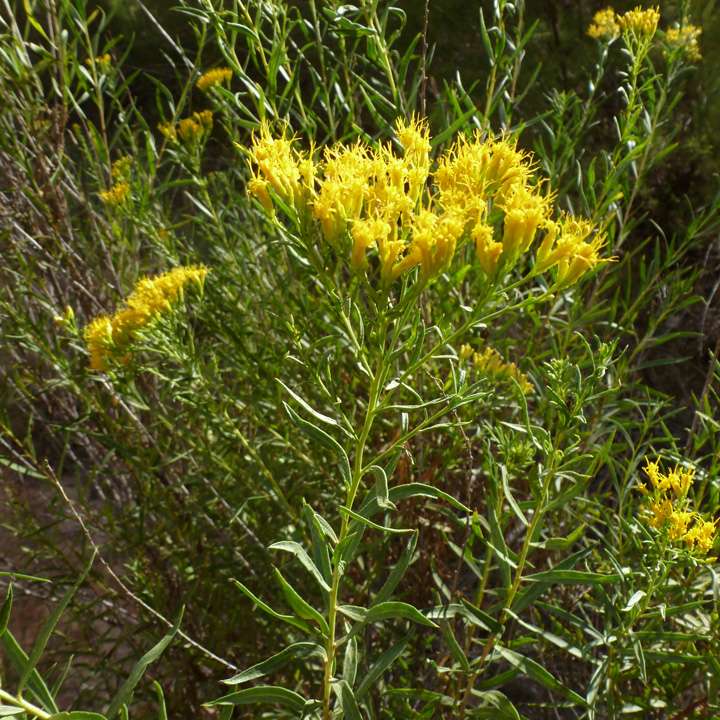Lorandersonia
|
Family: Asteraceae |
Subshrubs or shrubs, 5-350 cm. Stems erect to ascending, often fastigiately or intricately branched (bark typically tan, becoming white to tan or gray when older; twigs usually greenish), glabrous or scabrous, gland-dotted (sometimes in pits), often resinous. Leaves cauline (usually persistent; often crowded, appressed or ascending to spreading, becoming deflexed); alternate; sessile or petiolate; blades prominently 1-nerved plus sometimes 1-2 pairs of collateral nerves, linear to oblong or lanceolate to narrowly oblanceolate or broadly spatulate (flat to concave), margins entire or coarsely serrate, sometimes ciliate, faces glabrous or scabrous, gland-dotted (sometimes in ± deep, resin-filled pits, sometimes sessile) or pustulate, often ± resinous. Heads discoid (radiate in L. microcephala and L. peirsonii; rays occasionally observed in L. spathulata), usually in congested, rounded, compound, usually cymiform to corymbiform, sometimes racemiform arrays. Involucres cylindric to obconic or hemispheric, (4-15 ×) 1.5-6 mm. Phyllaries 13-30 in 3-6 series (often in vertical ranks), green to tan, 1-nerved (midnerves obscure or evident, sometimes enlarged subapically and glandular; usually flat or convex, sometimes keeled), ovate to oblong or lanceolate to oblanceolate, strongly unequal or subequal, mostly chartaceous, outer sometimes herbaceous or herbaceous-tipped, margins scarious (apices erect or slightly spreading, acute, acuminate, cuspidate, or obtuse), faces often resinous, sometimes stipitate-glandular (in L. peirsonii). Receptacles convex, pitted, epaleate (sometimes bearing scales or awn-like projections). Ray florets 0 or (1-)6-20, pistillate, fertile; corollas pale to dark yellow. Disc florets 4-63, bisexual, fertile; corollas pale to dark yellow, tubes usually shorter than (about equaling in L. salicina) gradually dilated throats, lobes 5, spreading to recurved, lanceolate to triangular; style-branch appendages lanceolate or attenuate to subulate. Cypselae (mostly tan to brownish) oblong to obconic, subterete to prismatic, 4-12-ribbed, faces glabrous or densely hairy; pappi persistent, of 20-80+ tan subequal, fine, barbellate, apically ± clavate bristles in 1 series. x = 9. Phylogenetic studies (R. P. Roberts and L. E. Urbatsch 2004) support the monophyly of this taxon consisting of species formerly in Chrysothamnus, Hesperodoria, and Tonestus.
|

